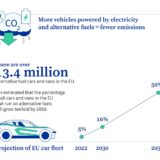
U.S. EPA approves California waiver amid Supreme Court scrutiny
The U.S. Environmental Protection Agency (EPA) has granted California a waiver to enforce its Advanced Clean Cars II (ACC II) regulations, as well as low-NOx rules for heavy-duty and off-road vehicles. This decision reinforces California’s authority under the Clean Air Act to implement stricter emissions standards than federal requirements, aimed at tackling the state’s significant air pollution challenges.
The ACC II programme, covering vehicle model years 2026 through 2035, integrates revised low-emission and zero-emission vehicle standards. It is expected to cut harmful pollutants such as fine particulate matter and greenhouse gases, reducing smog and toxic air pollution. EPA Administrator Michael S. Regan emphasised that this decision reflects the agency’s commitment to working with states to combat climate change and enhance air quality.
This EPA ruling follows a recent decision by the U.S. Supreme Court to maintain California’s waiver authority for now, rejecting broader constitutional challenges from industry groups and Republican-led states. However, the court has agreed to hear a narrower case on whether fossil fuel companies have standing to challenge the waiver.
California’s clean car standards have long been a cornerstone of its environmental policies, influencing 17 other U.S. states and the District of Columbia, which have adopted similar regulations. While critics argue that the waiver imposes undue burdens on consumers and businesses, proponents, including major automakers and environmental groups, underline its importance for reducing pollution and driving innovation in clean technology.
The interplay between the EPA’s decisions and ongoing Supreme Court scrutiny highlights the evolving legal and political battles over individual states’ rights to combat climate change and protect public health.












